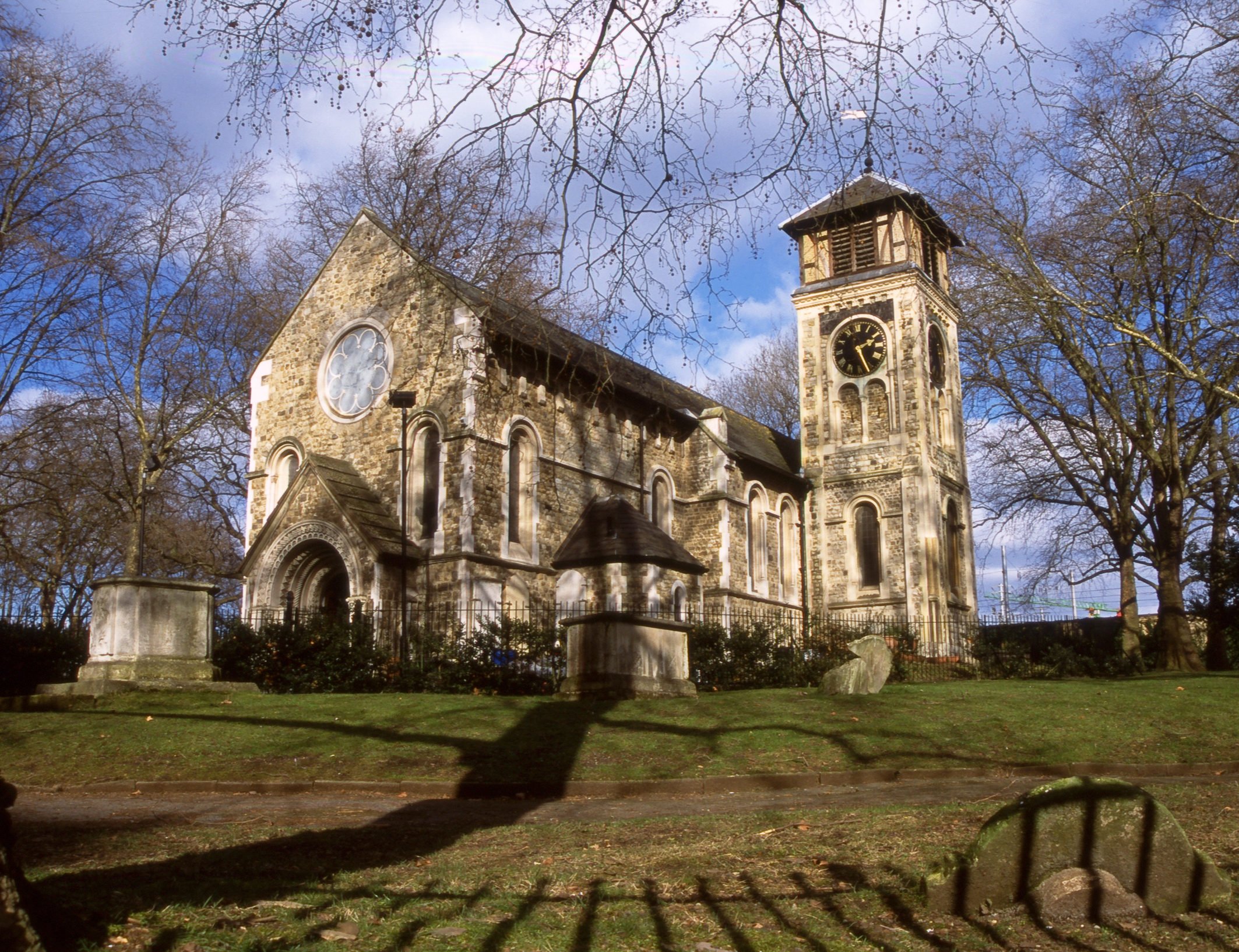We looked at filmic characters a fortnight ago: choosing from all the people in Mary Wollstonecraft's life, and simplifying and consolidating them to come up with a usable list of characters. Much the same process, including the need for artistic licence, comes in to play with choosing the locations to shoot. (The best example yet of artistic licence is Red Saunders's photomontage Hidden.)
Making London streets look like they did hundreds of years ago has become increasingly difficult and prohibitively expensive. Some exterior shots might work historically, but it would be tough. No house Mary lived in is still standing; two churches dear to her are still churches, although somewhat altered: St Pancras (Old) Church, where she was married and buried, and Newington Green (Unitarian) Church, where she was radicalised. The agency charged with enabling and encouraging cinematographers in the capital is Film London, but there is only so much they can do: they can't magic away all visual signs of the twenty-first century.
Interiors
A lot of the film could be shot indoors: most of Mary Wollstonecraft's life was writing and teaching, and she got her ideas from reading, conversations, dinner parties, and church, not the mainly male taverns (as in Shakespeare's day), or coffee shops (Boswell), or wandering the streets (Dickens, famously, for inspiration). Several interiors would be needed, as she moved so many times. This, I suggest, is a minimum:
- one interior representing her chaotic childhood home,
- the contrasting example of the ordered household of the Ardens,
- one for the Newington Green boarding school she set up,
- one for the home she created with Imlay in Paris,
- one for the dinner parties with her publisher & father-figure Johnson in London,
- two for her split home with Godwin (as they lived apart, even when married, radically refashioning relationships).
Cases could be made for so many more:
Exteriors
Depending on the budget, stock film can do for the ship voyages, and then interior shots of Mary in a storm-tossed cabin; stock film for the sublime landscape of Yorkshire, and interiors of Mary's time with the Ardens.
The great port of Lisbon, a little port lost in the woods of Norway, the mob in the streets of Paris, all these will require imagination and money and forethought to capture in the right way.
On the other hand, there is a wealth of choices for filming scenes in London today, should that be a possibility in the screenplay. Most of the areas where Mary lived and worked still exist as distinct and distinctive places. Hoxton, Bloomsbury, and Newington Green all have visually appealing green squares to focus on, and buildings contemporary with Mary Wollstonecraft, to cast the right architectural note.
Not everything must be done on a film lot.
- the childhood moves, back and forth between country and town;
- the family homes not only of the Ardens but also of the Clares and the Bloods;
- the houses of her friends at Newington Green (Rev. Richard Price, and widow Burgh, at least);
- the lodgings in Southwark, "first of a new genus";
- Fusili's studio;
- the house she borrowed on her arrival in Paris, of which she wrote so evocatively, room opening into empty room;
- the salons there, where she met the Revolution's American admirers.
Exteriors
Depending on the budget, stock film can do for the ship voyages, and then interior shots of Mary in a storm-tossed cabin; stock film for the sublime landscape of Yorkshire, and interiors of Mary's time with the Ardens.
The great port of Lisbon, a little port lost in the woods of Norway, the mob in the streets of Paris, all these will require imagination and money and forethought to capture in the right way.
On the other hand, there is a wealth of choices for filming scenes in London today, should that be a possibility in the screenplay. Most of the areas where Mary lived and worked still exist as distinct and distinctive places. Hoxton, Bloomsbury, and Newington Green all have visually appealing green squares to focus on, and buildings contemporary with Mary Wollstonecraft, to cast the right architectural note.
Not everything must be done on a film lot.
Images: St Pancras Old Church, by Pete [CC-BY-2.0 (www.creativecommons.org/licenses/by/2.0)];
Ships in a storm, Ivan Aivazovsky [Public domain];
Hoxton Square at night, by Dommeruk (Own work)
[CC-BY-3.0 (www.creativecommons.org/licenses/by/3.0)];
all via Wikimedia Commons


I am teaching Vindication of the Rights of Woman this semester. Every time I review her biography I wonder why there hasn't been a movie about her life.
ReplyDeletecompletely agree.
DeleteSame!!
DeleteTell us more! Have you mentioned the idea to your students? How did they react?
ReplyDeleteI agree, taking Eng Lit 2, she was amazing, witty, sensuous, satiric nature, I'm thinking Gwyneth Paltrow any thoughts?
ReplyDeleteGwyneth Paltrow? Heck NO! Apart from the fact that she's the wrong nationality, Gwyneth is far too insipid (she spoiled 'Possession' for me). Tilda Swinton would be perfect, but possibly too old for the role now.
ReplyDeleteYes! Her and Mary Astell. It needs to be done
ReplyDelete